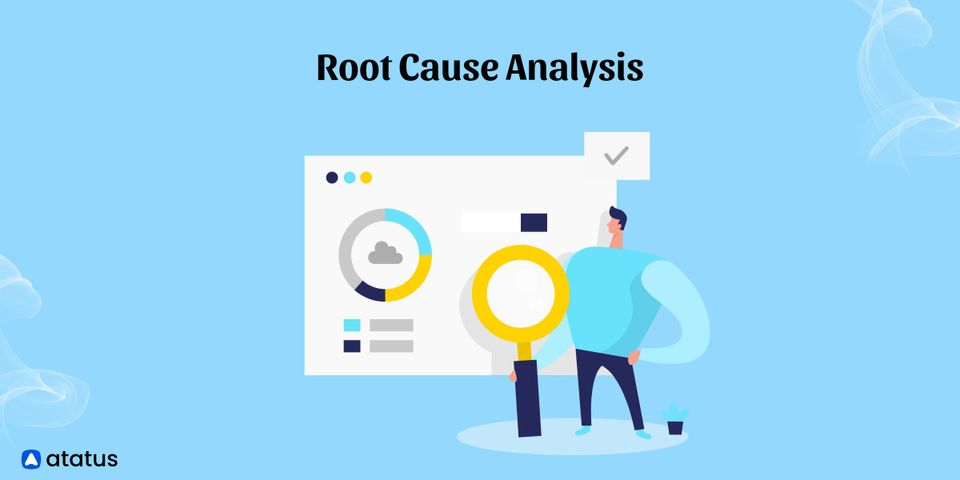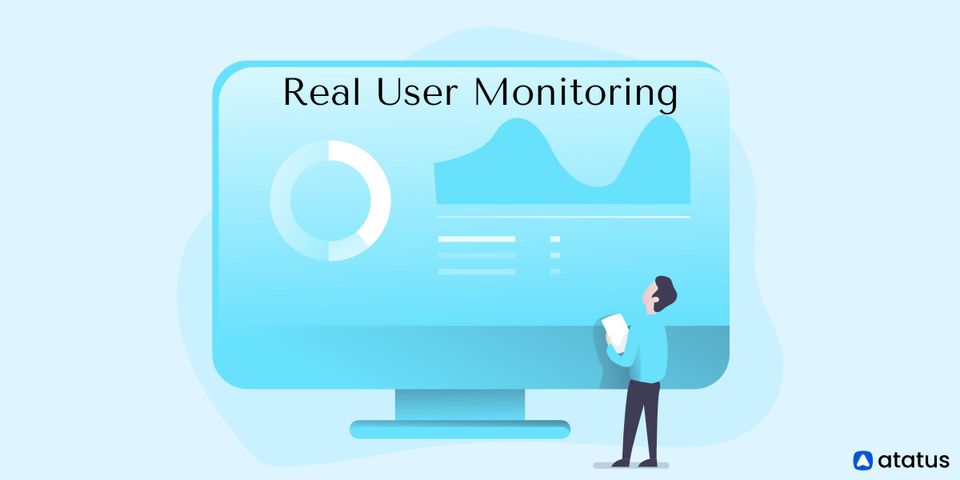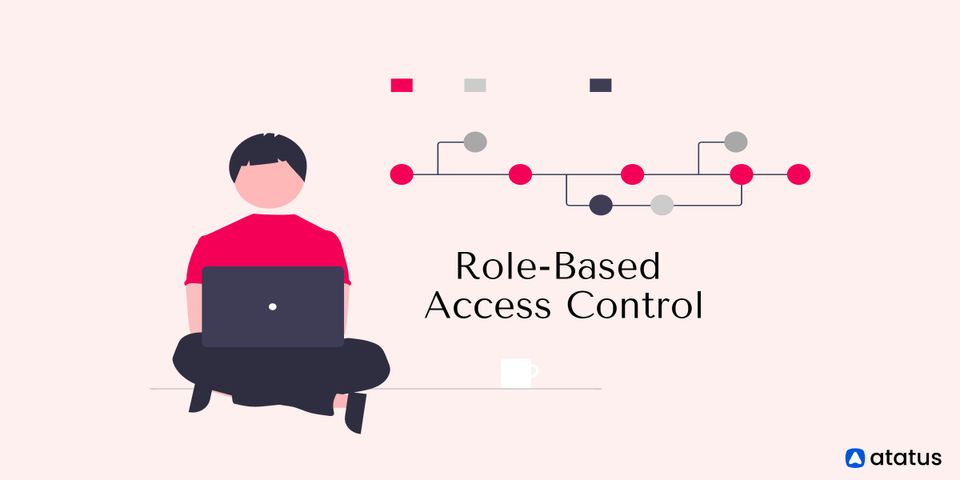You don't need a medical degree to understand the distinction between treating symptoms and genuinely curing a chronic illness. The same rule applies to software quality at the symptom layer, such as application performance monitoring and performance monitoring. Root cause analysis is discovering the when, where, and why of an issue at its source, before it has a chance to affect the end-user of an application or website for the second time.
We will go over the following:
- What is Root Cause Analysis?
- Methods of Root Cause Analysis
- How to Perform Root Cause Analysis?
- Why Root Cause Analysis is Important?
What is Root Cause Analysis?
Root Cause Analysis (RCA) is a method of analyzing major problems before attempting to fix them. It involves isolating and identifying the problem's fundamental root cause. A root cause is defined as a factor that, if removed, would prevent the occurrence of the bad event. Other elements that affect the outcome should not be regarded as root causes.
Root cause analysis is important for solving an issue since preventing an event from occurring is preferable to the negative consequences. For large organizations, short-term fixes are not economical; RCA helps to permanently eliminate the source of the defect.
Root cause analysis can be done with a variety of tools and approaches, but in general, it entails digging deep into a process to determine what, when, and why an event occurs. However, root cause analysis is a reactive approach, which means that an error or bad event must occur before RCA can be applied.

Root cause analysis is a team-based practice, not a choice made by a single person. RCA should begin by precisely identifying the issue, which is frequently an undesirable event that should not occur again.
To keep track of all important details, RCA should be used soon after an undesirable event. Process owners are the fundamental skeleton for a proper RCA, but they may not be comfortable with such meetings and conversations. As a result, managers will play a key role in conveying the value of RCA and maintaining the organization's non-blame culture.
Methods of Root Cause Analysis
The goal of RCA is to find all of the components that contribute to a problem or event. An analysis method is the most effective way to accomplish this. The following are some of the RCA methods:
- The “5-Whys” Analysis
A basic problem-solving strategy that allows people to quickly get to the base of the issue. The Toyota Production System popularised it in the 1970s. Looking at a problem and asking "why" and "what produced this problem" is part of this strategy. The answer to the first "why" frequently leads to a second "why," and so on, forming the foundation for the "5-why" examination. - Fish-Bone Diagram or Ishikawa Diagram
It's an analysis tool that comes from the quality management process and gives a systematic approach to looking at effects and the causes that create or contribute to those effects. The fishbone diagram is also referred to as a cause-and-effect diagram because of its function. The design of the diagram is reminiscent of a fish's skeleton, hence the name "fishbone" diagram. - Pareto Analysis
A decision-making statistical technique for analyzing a small number of activities that have a significant overall effect. The premise is that only a few essential reasons create 80% of problems. - Barrier Analysis
An investigation or design method entails tracking the routes via which a target is harmed by a hazard, as well as identifying any failed or absent countermeasures that could or should have prevented the unintended outcome. - Change Analysis
In circumstances where change is occurring, looks for prospective risk consequences and appropriate risk management techniques methodically. This can include situations where system configurations are modified, operating practices or policies are revised, or new or different activities are undertaken, among other things. - Causal Factor Tree Analysis
An investigation and analysis technique that records and displays all of the actions and conditions that were necessary and sufficient for a particular outcome to occur in a logical, tree-structured hierarchy. - Failure Mode and Effects Analysis
A "system engineering" process that looks at product or process failures. - Fault Tree Analysis
The event is at the top of a "tree of logic," at the root. Each situation that has an effect is represented by a set of logic expressions in the tree.
How to Perform Root Cause Analysis?
Root cause analysis can be applied to a range of situations in a variety of industries. Each industry may undertake the analysis in a somewhat different way, but when it comes to investigating issues with heavy machinery, most follow the same general five-step method.

Step 1: Data Collection
Collecting data is the most critical phase in the root cause analysis process, similar to how police maintain a crime scene and methodically collect evidence for evaluation. It's best to collect data as soon as possible after a failure or, if possible, while it's still happening.
Make a note of any physical proof of the failure in addition to the data. Conditions before, during, and after the incident; employee involvement; and any environmental elements are examples of data you should collect.
Step 2: Assessment

Analyze all obtained data throughout the assessment phase to uncover possible causal factors until one (or more) root causes are identified. The assessment phase, according to the DOE's procedure, consists of four steps:
- Identify the issue.
- Determine the problem's significance.
- Identify the immediate and surrounding causes of the problem.
- Working backward from the root cause, identify the reasons why the causes in the preceding phase exist; the root cause being the reasons that, if fixed, will prevent these and similar failures around the facility from occurring. The assessment phase comes to a halt after the root cause has been identified.
Step 3: Corrective Action
Once a root cause has been identified, corrective action can be taken to improve and strengthen your process. Determine the corrective action for each reason first.
Then, to ensure that your corrective activities are practicable, ask these five things given out by the DOE.
- Prevent recurrence
- Feasible
- Production objectives
- Safety
- Effective
Before taking corrective action, your entire firm should debate and consider the benefits and drawbacks of doing so. Consider how much it will cost to make these modifications. Training, engineering, risk-based, and operational expenses are all possible costs. Weigh the benefits of removing the failures against the likelihood that the remedial actions will work.
Step 4: Communication

Communication is essential. Make sure that everyone who is affected is aware of the planned change or implementation. Supervisors, managers, engineers, and operations and maintenance staff are examples of these parties in the manufacturing setting.
Any corrective actions should also be communicated to suppliers, consultants, and subcontractors. Many organizations make any modifications known to all departments so that they can assess whether or not the changes apply to their specific position about the overall production process.
Step 5: Follow-up

In the follow-up step, you'll see if your corrective action was successful in correcting the difficulties.
- Follow up on remedial actions to ensure that they were properly implemented and are operating as intended.
- Review the new corrective action tracking system regularly to ensure that it is working properly.
- Analyze any further recurrence of the same event to identify why the corrective actions failed. Make a note of any new occurrences and analyze the symptoms.
Regular follow-up allows you to assess how well your corrective actions are working and helps in the detection of new issues that could lead to future failures.
Why Root Cause Analysis is Important?
In the industry, repeat problems are a source of waste. Website downtime, product rework, increased scrap, and the time and resources spent "solving" the problem are all examples of waste. We may assume that the problem has been fixed when, in fact, we have just addressed a symptom of the problem rather than the fundamental cause.
When done correctly, a Root Cause Analysis can reveal weaknesses in your processes or systems that contributed to the non-conformance and help you figure out how to avoid it in the future. An RCA is used to figure out what went wrong, why it went wrong, and what improvements or modifications are needed. Repeat problems can be avoided with the right implementation of RCA.
The use of RCA methodologies and tools is not restricted to manufacturing process issues. Many industries employ the RCA methodology in a variety of scenarios, and this organized approach to problem-solving is widely used. RCA is employed in a variety of situations, including but not limited to:
- Software Analysis or Computer Systems
- Office Procedures and Processes
- Quality Control Problems
- Analysis of Medical Incidents
- Accident Analysis or Safety-based Situations
- Engineering and Maintenance Failure Analysis
- Change Management or Continuous Improvement Activities
The point is that RCA can be used to solve practically every problem that businesses confront daily. A company that could benefit from RCA has a high rate of erroneous customer orders and shipments. The process can be mapped, examined, and the problem's underlying causes identified and resolved. As a result, the company has a happier, more loyal client base and reduced total costs.
Conclusion
Root cause analysis is a time-consuming process that should not be undertaken on a whim. To save time and speed up the process, your team may decide to cut corners. Rushing the process, on the other hand, can be hazardous to the entire project if you want to get to the bottom of any complex occurrence. When you have a good cause to do RCA, it's in your best interests to provide a conducive environment for the process to succeed.
Further Reading:
Monitor Your Entire Application with Atatus
Atatus is a Full Stack Observability Platform that lets you review problems as if they happened in your application. Instead of guessing why errors happen or asking users for screenshots and log dumps, Atatus lets you replay the session to quickly understand what went wrong.
We offer Application Performance Monitoring, Real User Monitoring, Server Monitoring, Logs Monitoring, Synthetic Monitoring, Uptime Monitoring, and API Analytics. It works perfectly with any application, regardless of framework, and has plugins.

Atatus can be beneficial to your business, which provides a comprehensive view of your application, including how it works, where performance bottlenecks exist, which users are most impacted, and which errors break your code for your frontend, backend, and infrastructure.
If you are not yet an Atatus customer, you can sign up for a 14-day free trial.





